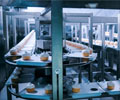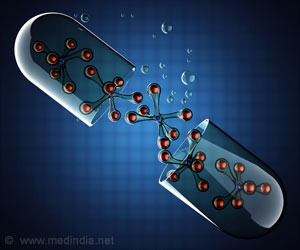Land of Kebabs, also reaps enormous profit in fast food,chicken
Following Eid and Ramzan, it is time for fast food owners to rejoice with their newly earned profit. Fast food chains in Lahore and the rest of Pakistan are a very good source of profit with respect to already thriving business in a country renowned for its ethnic cuisine.
There are now 26 KFCs and 18 McDonald's across the country. Not so much in numbers perhaps but significant nonetheless for a country with essentially only three big urban centres - Islamabad, Lahore and Karachi.A stroll down the Mall, Lahore's commercial hub, provides enough evidence of the Pakistani palate and its increasing fondness for burgers and fried chicken.
Office workers, families and friends head to their favourite restaurants, many walking past humble outdoor eateries offering traditional Pakistani food like karahi chicken or boti kebab and straight towards the bright lights of McDonald's, KFC, AFC (Al-Najan Fried Chicken), or Chick 'n' Chicks, a KFC for kids.
"I go to fast food restaurants two or three times a week," says Salman Khan, 21. "I like the crunchy chicken at McDonald's - it's very tasty."
Ali Salehuddin, 19, says: "I like Western food a lot. Whenever I'm in a sad mood, I go to KFC."
And Jamal Yasir, 37, explains: "McDonald's is my favourite, and KFC is my number two."
Advertisement
It claims that in Asia, chronic diseases, dominated by diabetes, cause twice the number of deaths as infectious diseases (including HIV), maternal/prenatal conditions and nutritional deficiencies combined. The report also claims that it is the increasing consumption of fatty, Western foods across the continent that has caused the development.
Advertisement
Ever since the first KFC restaurant appeared here in 1997, soon followed by the first McDonald's joint in 1998, the relationship between Pakistan and its American fast food chains has been uneasy to say the least.
Some joints have even been the targets of terrorists who are believed to resent their Americanism. On Sep 9 this year two separate bombs exploded within minutes of each other at a KFC and a McDonald's restaurant in Karachi.
But business is still good.
During this year's Ramzan, KFC offered two iftari deals -- a 'Ramzan buffet', an all-you-can-eat offer featuring burgers, fries and chicken pieces for Rs.250, and a 'Ramzan bucket', nine pieces of chicken and 1.5 litres of Pepsi for Rs.500.
"We had many more customers than usual during Ramzan," said Wasim Shehzad, chief supervisor at the KFC on the Mall in Lahore. "On average, we had 250 customers each night. Most people came as families."
And while the festive season represents a peak time of business for fast food joints, it's hardly a struggle through the rest of the year.
"Around 25 of the same people come here every day of the week," continues Shehzad. "They are mostly office workers who work nearby."
Across the road is Chick 'n' Chicks, part of the KFC chain, but aimed more specifically at children.
Amanat Chann, manager of the restaurant on the Mall, says: "Between five and 10 of the same families come here every day, with two or three children in each family."
Pakistani children eat chicken burger and fries every day of the week. It's a state of affairs that would have been unthinkable a few years ago, and yet it's now the norm for many across the country.
It's no surprise that, as the WHO report states, the non-insulin dependant variety of diabetes (type 2), with typical onset in late adulthood in most parts of the world, is now emerging in children right across Asia.
According to the International Diabetes Institute (IDI), 89 million Asians now have diabetes, with 8.8 million in Pakistan.
The problem shows no sign of abating. By 2025, Asia is expected to have 170 million diabetics. And with the number of fast food joints continuing to grow, it is hard to see things changing.
In an increasingly acquisitive society, it seems that for many in Pakistan it is the concept of food on the go that is the key to the fast food chains' appeal.
Amanat Chann explains: "For people in the commercial areas, time is short, so they want food prepared at speed."
And of course it is the money they earn that allows them to eat at fast food restaurants whenever they choose. Short on time, high on disposable income, and fast food options galore: it's a lethal combination.
You can only hope that the WHO report sparks a change in the diets of Pakistan's population.
In a country still at the beginning of a long road to recovery after its worst natural disaster - the Oct 8 earthquake killed 86,000 people - a diabetes epidemic on the scale that has been predicted could be a problem in many ways even harder to resolve.











